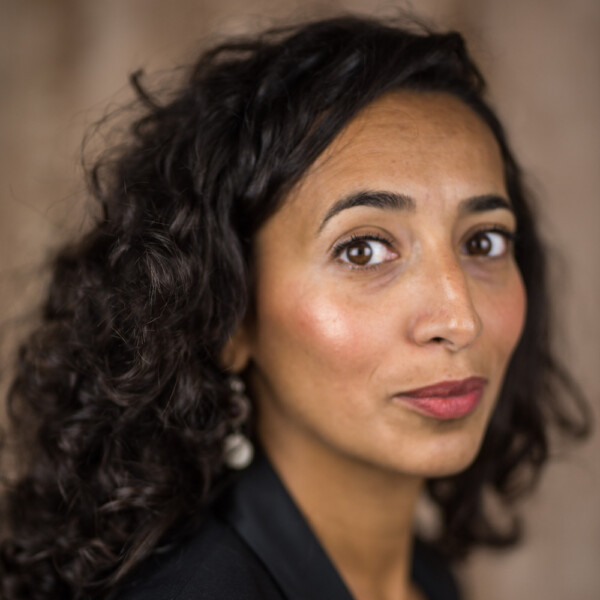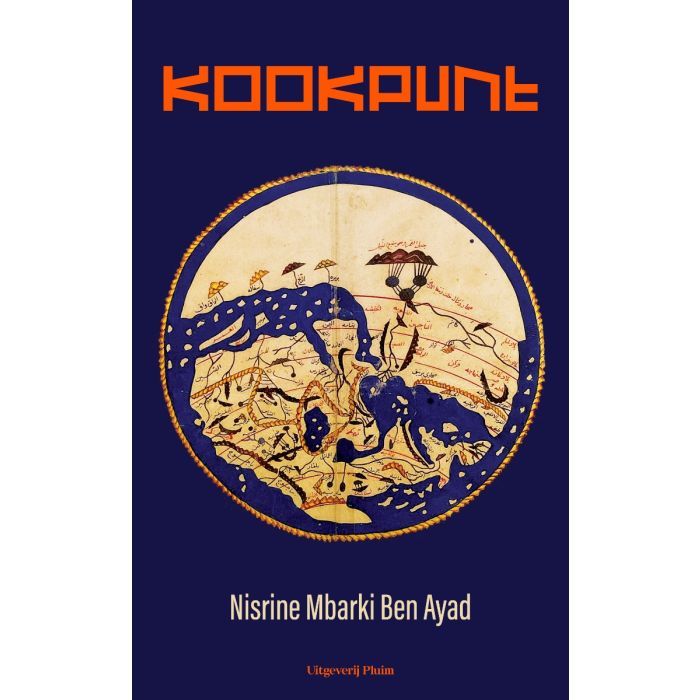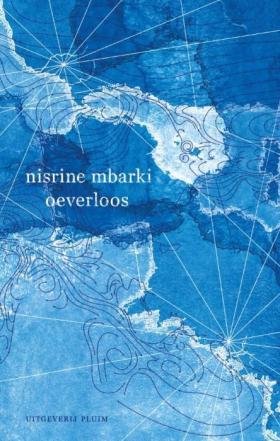‘The city’s language is never fixed; it drifts, mutates, and gathers new meanings with every encounter’
An interview with writer, poet and translator Nisrine Mbarki Ben Ayad
interviewed by Alex Fleming
For as long as they have existed, metropolises have inspired artists and writers around the globe. Over its storied history London has played host to many writers, poets and thinkers, fuelling encounters that have left their mark on literature as well as on the city itself. To explore this literary heritage, University College London (UCL) has created a multi-faceted initiative, Lost and Found: A European Literary Map of London. Through its digital map, cross-continental exhibitions and public events, the project reveals a London and a Europe of the imagination.
To mark this special issue on city writing – conceived as an homage to the European Literary Map of London – Swedish Book Review spoke to three contemporary writers from across Europe, Nisrine Mbarki Ben Ayad (the Netherlands), Tone Schunnesson (Sweden) and Iryna Shuvalova (Ukraine), for all of whom place plays an important part in their work. In this series of interviews, the writers discuss how they respond to the complex fabric of urban modernity, their relationships to London as a city, and the intersections of their various literary practices.

SBR: How important is place to you in your writing? What elements of cities do you personally respond to most?
Nisrine Mbarki Ben Ayad: The notion of place has always been central to my writing, especially in fiction. I consider places and cities not just as settings but as living characters, shaped by time, movement, and memory. In my novel Kookpunt (Boiling point, Uitgeverij Pluim, 2025, in Dutch) each chapter unfolds in a different city, country, and decade, so place becomes a living historical structure rather than a simple backdrop.
What draws me in most are the layers of history and the people that create that history. History writes itself into the physical architecture, the gestures and the languages of a city. People, in turn, build, dismantle, and reimagine the city. Another element that deeply fascinates me are the sounds of cities, you could even say the breath of cities. A city’s rhythm changes, just like that of living beings. The exhale of morning is not the same as the pulse of night. These sonic textures, for me, illustrate a city’s aliveness.
How do you go about recreating the fluidity and texture of an urban landscape in your work?
I begin by listening to the sounds of a city. Every city has its own rhythm, a specific constellation of sounds that are woven into its urban structure. I like to think of the texture of a city in two layers: a hard shell and a soft core. The hard shell is made of concrete and steel, the roads, the buildings, the architectural grid that gives the city its form. The soft core is the natural or organic that moves within it: the waters, the trees, the air, the people, and the local culture.
As I write in one of my poems: we are water and we fear ourselves. We are made of water, everything organic and alive is in constant motion. Nothing living remains still. This perpetual transformation, this ongoing negotiation between solidity and flow, that movement is what gives life its texture. I try to recreate this movement in my writing.
History writes itself into the physical architecture, the gestures and the languages of a city. People, in turn, build, dismantle, and reimagine the city.
The theme of this issue was inspired by the European Literary Map of London. What is your relationship to London as a city? Are there any particular works of literature or art that have shaped your vision of the city?
Friends and encounters shape this city for me. The connection I have with London is not defined by its landmarks or institutions but by these intimate connections that make the city feel alive and by the stories we share.
I always seem to visit London in moments of transition, when something in my life is shifting. Maybe the city holds that energy of change, at least for me; it’s a place where movement never stops, where people and languages overlap in unpredictable ways. Each visit feels like a crossing, a brief pause before stepping into a new phase, and that is very exciting.

Language [...] becomes a geography of crossings, a living map shaped by our memories, histories and imagination.
Multiplicity and multilinguality are important elements of your poetry. How does this tie in with your exploration of place?
As a multilingual writer, the languages I embody and that embody me are fundamental to both my life and my writing. They shape the way I move through the world, the way I hear and inhabit cities, which are polyphonic spaces where tongues intertwine, collide, and reinvent one another. Fragments of speech are a living archive of life, and of translation. The city’s language is never fixed; it drifts, mutates, and gathers new meanings with every encounter. Writing within this polyphony means listening to what moves between languages, the silences, the untranslatable textures that give the urban landscape its living voice.
Multiplicity and multilinguality are central to my poetry because they reflect the layered and complex background of a human being. No place speaks in a single language, every landscape carries traces of many voices, histories, and ways of being. Writing across languages allows me to stay close to the human that I am. This multiplicity resists fixed meanings, rigid ideas about form and background, keeping languages an open and fluid means that is full of possibility, much like the spaces I try to write about. Language, in this way, becomes a geography of crossings, a living map shaped by our memories, histories and imagination.
I often think of my work as unfolding within Nepantla, the in-between space Gloria Anzaldúa describes, where different worlds meet and remake one another. This in-between is a space of multiplicity, where boundaries blur and new forms of expression can emerge. It is a space of freedom, where one can move between languages, identities, and places without having to choose, define or be defined. To write from that space is to inhabit that openness, to listen to what is alive in the movement between worlds without wanting to frame or choose any part of my being.
Among many other things, you also translate. How does translation inform your writing practice (or not)?
Translation is very dear to my heart and to my writing practice because it trains me to inhabit the spaces between languages that I spoke about, the spaces of opacity, resistance, and possibility. In translating, I am constantly reminded of the notion of meaning; meaning is not always meant to be fully captured or made transparent. Some elements must remain opaque, holding their textures, rhythms, and cultural specificities intact in the source language. This opacity is not a limitation but a form of freedom: it allows language to stay alive, to carry traces of what cannot be fully rendered, and to create moments of refusal against the pressures to smooth, simplify, or universalize.
These acts of refusal, the deliberate choice not to fully domesticate a word, a phrase, influence my own writing. They remind me that language is not a neutral vessel but a living terrain where histories, identities, and worlds intersect and sometimes resist translation because they resist assimilation to the hegemony of monolingualism. Translation, then, is not just a mechanical transfer but an artistic and ethical practice, one that allows me to experiment with multilinguality, to follow threads across languages, and resonate in ways that are unpredictable and rhizomatic. Like a rhizome, translation allows movement in multiple directions simultaneously, fostering connections that are non-hierarchical, relational, and open-ended.
In this way, translation informs my poetry and prose by cultivating attentiveness to what moves between languages, to silences, to the opacity. It encourages me to embrace multiplicity, and to write from a place where multilinguality, unicity and refusal are not obstacles but generative forces. Language becomes a living geography, a space of imagination, a terrain shaped by encounter, transformation, and the persistent refusal to be fully transparent.

Nisrine Mbarki Ben Ayad
Nisrine Mbarki Ben Ayad is an Amsterdam-based multilingual versatile poet, feminist, writer, curator and literary translator. Her literary work covers different genres like poetry, short stories and theatre. As a literary translator she translates poetry from Arabic and English into Dutch. As a curator she works for different international literary festivals and is member of several literary juries and boards in the Netherlands. In January 2022 she published her poetry debut, oeverloos (shoreless), for which she was nominated for the C.Buddingh price, a prize for the best Dutch debut of the year, and for the Herman De Konickprijs, a prize for the best Belgian and Dutch poetry collection of the year. In September 2025 she published her novel Kookpunt (Boiling Point). English translations of her poetry can be found in Words Without Borders and Versopolis Poetry.
